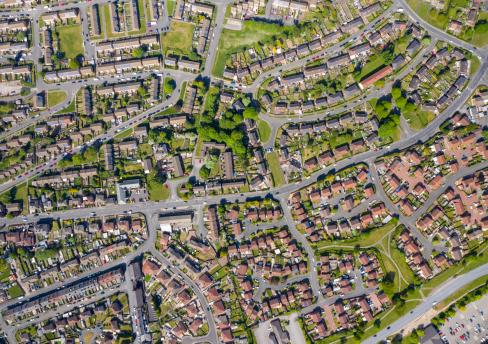According to the National Geographic, by 2050, the world will need to feed 2 billion more people than it does now.
In response to these pressures, new and alternative methods of food production are being explored. One such example is the practice of vertical farming.
What is it?
Vertical farming works by growing crops indoors in vertically stacked layers, often without the use of soil. The technique allows for fruit and vegetables to be cultivated in constrained spaces, free from pesticides and under fully controlled environmental conditions.
This farming method is well-established in countries like Japan, and the industry is expected to grow exponentially over the next decade, with research group IDTechEx forecasting that annual sales will increase to $1.5bn by 2030.
In Scotland, just last year, it was announced that the country's first commercial vertical farm will be built in Aberdeenshire, providing 1343 square metres of growing space and producing up to 70 tonnes of produce per year.
What are the benefits?
A key benefit of vertical farming is not having to rely on the weather. By cultivating crops within a controlled indoor environment, variables such as light and water can be accurately measured throughout the year. This removes the uncertainty of nature: crop yield is more consistent, and produce is higher quality across the board. These benefits are invaluable in countries where adverse weather such as drought and flooding can make growing crops extremely difficult.
Indeed, the ability to control growing conditions is likely to become increasingly important in light of climate change, and vertical farming is considered to be more environmentally friendly. Firstly, by growing produce stacked one above another, this radically reduces the amount of land space needed to grow plants and can be done anywhere - buildings, shipping containers, and even abandoned mineshafts. It can also open up farmland for other diversifying opportunities, which may not have otherwise been possible.
What's the catch?
Despite these benefits, the idea that all our fruit and vegetables will soon be grown indoors in neatly stacked layers is probably unrealistic. The reason for this are the high costs that come with starting up a vertical farming business. Growing crops indoors requires high-tech equipment, and relies on a range of technologies. There are high ongoing costs of maintaining a controlled environment 24/7, and ensuring there is the man power to oversee running. On top of this, businesses are under pressure to offer competitive prices to consumers. All this means that many vertical farming businesses have struggled to make a profit. As a result, while most crops can technically be grown in a vertical farm, businesses have tended to focus on higher-value produce, meaning that vertical faming is unlikely to become a mainstream method of production.
Limitations aside, this new type of farming is something which we may well see more of: it is environmentally friendly, and in terms of space utilised, it creates the potential for more crops to be grown closer to home. With increasing disruption to cross-border trade arising from Brexit and Covid-19, and an increasing focus on reducing carbon emissions, these benefits are more important than ever.
If you'd like to speak to us, please contact our Agriculture and Rural team.
The content of this webpage is for information only and is not intended to be construed as legal advice and should not be treated as a substitute for specific advice. Morton Fraser LLP accepts no responsibility for the content of any third party website to which this webpage refers. Morton Fraser LLP is authorised and regulated by the Financial Conduct Authority.










